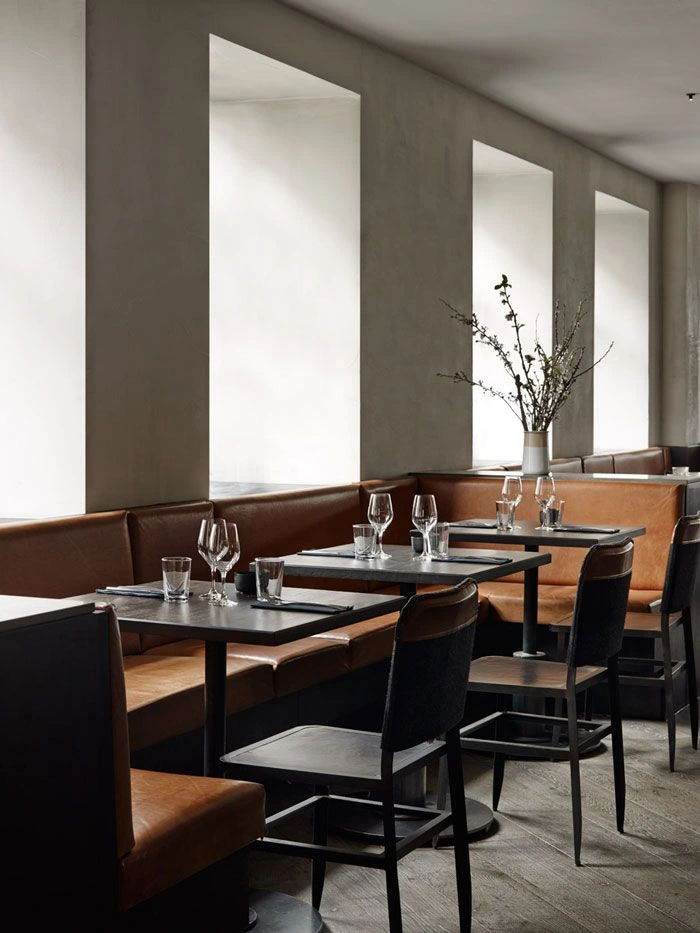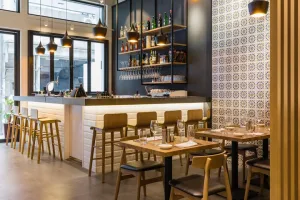Restaurant remodeling is an excellent option for giving your establishment a new life, both aesthetically and functionally. Whether you want to change the style, improve the overall efficiency, or simply catch up with new safety regulations, you’ll need a plan and proper execution of that plan to ensure success. You will be off to a good start in knowing the scope of the project, having the right partners, and supervising accordingly. The ensuing guide covers all you need to know to begin your restaurant remodeling process and leads you through this with confidence and clarity.
Key Things to Consider Before Renovation
Know the Scope of the Remodel
The scale of renovation determines the kind of professional one needs and where most of the focus shall be:
Cosmetic Renovation: When you want just cosmetic changes, such as painting, changing out furniture, or adding decorations, you might need a decorator or a general contractor. Cosmetic changes are less intrusive and take less time; therefore, they are ideal when the restaurant needs a face-lift.
Structural Changes: For expansions of dining areas or kitchen reconfigurations, the expertise of architects, engineers, and specialized contractors is necessary to ensure that the renovations are safe and effective. These projects often require considerable investment but can have a very significant impact on improving the functionality and attractiveness of your restaurant.
Set a Realistic Budget
A clear budget is the foundation of a successful remodel:
- Detailed Segmentation: Segment costs into categories like materials, labor, permits, and contingencies. For example, specifying amounts for lighting fixtures, seating arrangements, and kitchen equipment can help control expenses.
- Professional Guidance: Work with a financial advisor or project manager to align your goals with your budget. Their expertise can identify cost-saving opportunities without compromising quality.
- Contingency Planning: Allow extra funds for unexpected delays or price increases. Experts suggest setting aside 10-15% of your budget to handle unforeseen expenses and avoid financial strain during the project.
Ensure Compliance with Local Codes
Navigating regulations is a key step in the remodeling process:
Permits: It is best to obtain permits before starting construction. This would avoid potential legal issues and ensure that your project complies with the minimum building standards in your area.
Approvals from the Health Department: Ensure that improvements in the kitchen or food preparation area comply with the health and safety codes. This covers ventilation, food storage areas, and proper waste disposal to maintain cleanliness standards.
Define Your Design Objectives
Your design should reflect the identity of your brand but also be functional:
- Professional Input: Work with interior designers to create an area that will elevate your brand and customer experience. If your restaurant offers fine dining, for instance, use elegant lighting, sophisticated furniture, and a muted color scheme to create the right ambiance.
- Functionality Focus: Improve all layouts and updates to improve workflows among employees and comfort for your customers. Consider an open kitchen layout that will make dining customers feel engaged or reconfigured seating arrangements for better customer flow.
How to Plan Restaurant Renovation

Initial Planning and Consultations
Start with a very clear idea of your goals:
- Concept Development: Collaborate with architects or designers to develop a plan that balances aesthetics and functionality. A contemporary design might incorporate eco-friendly materials and creative layouts that conserve energy.
- Stakeholder Engagement: Engage team members to ensure the design will meet operational needs. Their input can highlight practical issues and areas for improvement.
Budgeting and Scheduling
Create a realistic timeline and financial plan:
- Phased Approach: Divide the project into manageable phases to reduce disruptions. For example, address the dining area first and proceed with back-of-house upgrades while keeping the kitchen open.
- Time Management: Allow time for design, permitting, and construction in your schedule. Effective communication with contractors and suppliers can prevent delays and keep the project on schedule.
Assemble the Right Team
Gather reliable restaurant contractors to bring your vision to life effectively:
- General Contractors: Oversee construction and subcontractors. Look for contractors with restaurant remodeling experience to ensure they are well-versed in industry-specific needs.
- Engineers: Ensure that structures are intact and meet the code. They will also ensure that current infrastructure can hold projected modifications, such as extra seating or new kitchen equipment.
- Specialists: Employ specialists in certain areas, like HVAC or custom cabinetry, for unique needs. Such experts provide specialized solutions that fit your restaurant perfectly, adding functionality and appeal.
Implementation and Supervision
Stay Informed
Ensure the project is moving forward. Schedule regular project status reviews with your project manager. These meetings can also serve as a point in time to address questions or concerns you may have or need to make changes.
Quickly Address Problems
The faster you can solve problems, the less chance there is for delay or going over budget. Maintain open lines of communication with your team to overcome any obstacles quickly.
Restaurant Renovation FAQs
Do I need a permit for my remodel?
Permits are frequently required for construction or renovation involving structural elements, electrical systems, and kitchen spaces. Check with your local building department for requirements in your area.
How Long Does a Restaurant Renovation Take?
Timelines vary depending on the scope. Cosmetic changes might take a few weeks, while major renovations can go from 8 to 16 weeks or more. Complex projects involving structural changes may take several months.
Can I Stay Open During a Renovation?
Minor updates may have you stay open, while major renovations usually mean you’ll need to close down. Consider creating a temporary pop-up location while your main place is undergoing remodeling.
Choosing the Right Contractor
Choosing the right contractor is critical to a successful restaurant remodel:
Industry Experience: Restaurant remodeling experience is important for your contractor. They understand specific industry hurdles and can make the process easier.
References and Reviews: Check for licensing and insurance, along with any client feedback, to ensure that the person is reliable. Online reviews and references give you an idea about the quality of work and professionalism of the contractor.
Cost Breakdown for Renovations in Restaurants
Cosmetic Updates: Cosmetic updates will cost $50,000–$150,000 for painting, lighting, and furniture. Such a change can greatly enhance the aesthetic appeal of the restaurant without major structural work being done.
Partial Remodels: $150,000–$300,000 for kitchen upgrades or new flooring. Investments in high-traffic areas can not only improve functionality but also aesthetics.
Full renovations: More than $300,000-structural changes and high-end finishes. Speaking generally, with a full renovation, a great customer experience is probably provided.
Tips to Maximize Your Investment
Invest in Energy Efficiency
Retrofit energy-efficient appliances and LED lighting to save utility costs and long-term expenses. Consider going further by incorporating solar panels or an energy management system for added sustainability.
Optimize Layout and Functionality
Use modular furniture and adaptive layouts that maximize the use of space for the greatest number of customers. Banquettes, for instance, allow convertible seating arrangements that help handle larger parties and groups of all sizes. Work to make workflow improvements through better kitchen and dining area design. This means reduced waiting times and a better experience for customers.
Improve Your Branding
Design a look that best shows the personality of your restaurant and resonates with customers. Make use of decor, menu, and employee uniform repetition to reinforce your brand.
Utilize affordable decor via DIY projects or low-cost digital designs. Give your space character by adding special touches.
Reuse and repurpose
Save money and reduce waste by repurposing any existing furniture, fixtures, and decor. Give old items new character in your space, and renovate according to eco-friendly measures.
Schedule wisely
Plan renovations during off-peak times to minimize revenue impact. Use this period to promote the upcoming changes and build anticipation among customers.
Extra Tips to Save Money
- Target high-impact areas, such as kitchens and high-traffic areas, to maximize return. Focus on improving the customer experience and making things easier for operations by upgrading what will make a real difference.
- Source materials locally to save on shipping costs. Supporting local suppliers will also help grow community ties.
- Salvage or second-hand materials that could work with your design. Items repurposed or reused often give a unique feel to design elements.
Advantages and Disadvantages of Restaurant Renovations

Pros
Increased Value
A new environment attracts new customers and retains old ones. Upgrade facilities and modernize the surroundings to provide a unique experience to all customers.
Operational Efficiency
Improved layout and updated equipment facilitate workflow. Smooth operations translate into better customer service and lessen employee burdens.
More Revenue
The latest environment improves consumer satisfaction and leads to increased sales. Improved aesthetics and functional facilities can demand value-for-value pricing.
Cons
Upfront Costs
Proper financial planning will help the investor to adjust to the investment. Proper budgeting will make the financial burden more bearable.
Minor Inconvenience
Construction may disrupt day-to-day operations. Communication of changes to customers and employees helps them adapt more smoothly.
Possible Delays
Supply chain shortages and unexpected structural damages can cause timeline overruns. The presence of some flexibility in your schedule diminishes the negative impact of such delays.
Ready for Renovation?
Renovations in restaurants are time-consuming yet worth every effort. A well-planned and well-executed renovation can raise your establishment to a whole new level by making it visually stunning and operationally impressive and reflecting your brand identity. Clear goals, a good budget, and the right team are all you need to turn your dreams into a thriving, modern destination. Take up the challenge and let your restaurant’s transformation take center stage.



